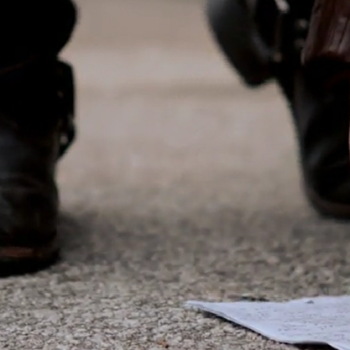Some may say, why are you Lutherans making a big deal out of All Saints’ Day? I thought Luther was against all of that cult of the saints stuff. Well, Reformation Christians have a different take on what a saint is.
In Roman Catholicism, a person of exceptional piety and good works might be a candidate for sainthood, but that has to be established on the basis of complex hearings and specific evidence, including two miracles that can be ascribed to prayer to that possible saint. The reason for this process, as I understand it (and my Catholic friends should feel free to correct me), is to make sure that the candidate is, in fact, currently in Heaven. Not only that he or she died in the faith and so is saved, but that the would-be saint has completed the necessary time of temporal punishment for sins in Purgatory, a process that can take hundreds or even thousands of years.
Lutherans emphasize that saints are made such by Christ, who has atoned for and forgives sins so that no Purgatory is necessary. So that every Christian is simultaneously a sinner and a saint.
“Saint” means “holy.” Being holy is not exactly the same as being a good, moral person, though that on some level is part of it. In the Old Testament, inanimate objects–ground, days, sacrificed carcasses, garments, Tabernacle and Temple furnishings–are described as “holy.” They were set apart and dedicated for God’s particular use. They were made holy by sprinkling them with sacrificial blood. The same was true for the priests, who were holy not because of their exemplary morality but because they were sprinkled with the blood and authorized to wear the holy garments, the holy crown, and the holy breastplate.
For Luther, we are made holy by our baptism, which sets us apart for God. That begins the life of faith, in which we grow in our dependence on Christ, who continues to make us holy by means of His Word and His Body and Blood in Holy Communion. Also by our trials and our struggles against our sins, as we come to Christ again and again and receive His absolution. We grow in our sanctification, as we grow in our faith, and at our death–when our sinful flesh perishes–we are received into Heaven as perfectly Holy because of the work of Christ.
True, someone who has been baptized can reject Christ’s work and violate that holiness–which adds sacrilege to any other transgressions, but having once been “set apart” to Christ, it is possible to return to that status by repentance and faith, which receives God’s gift of grace in Christ.
So all Christians on earth are saints (as well as sinners), but in Heaven all of the redeemed are saints and sinners no longer, having been cleansed of all of that and utterly transformed.
So on All Saints’ Day, we celebrate all of the Christians–the Saints–who have gone before who are now rejoicing in Heaven. This includes our family members and other loved ones who have died, the Christians of ages past, and the vast company of those with whom we belong as fellow-members of the Body of Christ.
As the reading for All Saints’ Day puts it, the Saints in Heaven constitute “a great multitude that no one could number, from every nation, from all tribes and peoples and languages, standing before the throne and before the Lamb, clothed in white robes,” and they have become such because “they have washed their robes and made them white in the blood of the Lamb (Revelation 7:9, 14).












